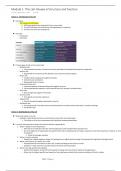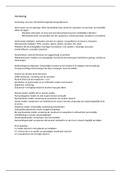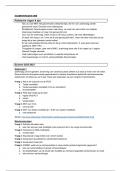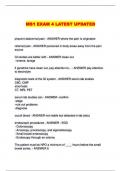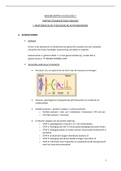Class notes
Human Cell Physiology
- Course
- PHGY170 (PHGY170)
- Institution
- Queen’s University (QU )
Complete set of notes for phgy170 covering: -The cell: Review of structure and function -The Nucleus -The endoplasmic reticulum -The endomembrane system and the Golgi apparatus -Mitochondria and cellular energy production -The plasma membrane and lipids -Cellular communication -The cytoskel...
[Show more]
